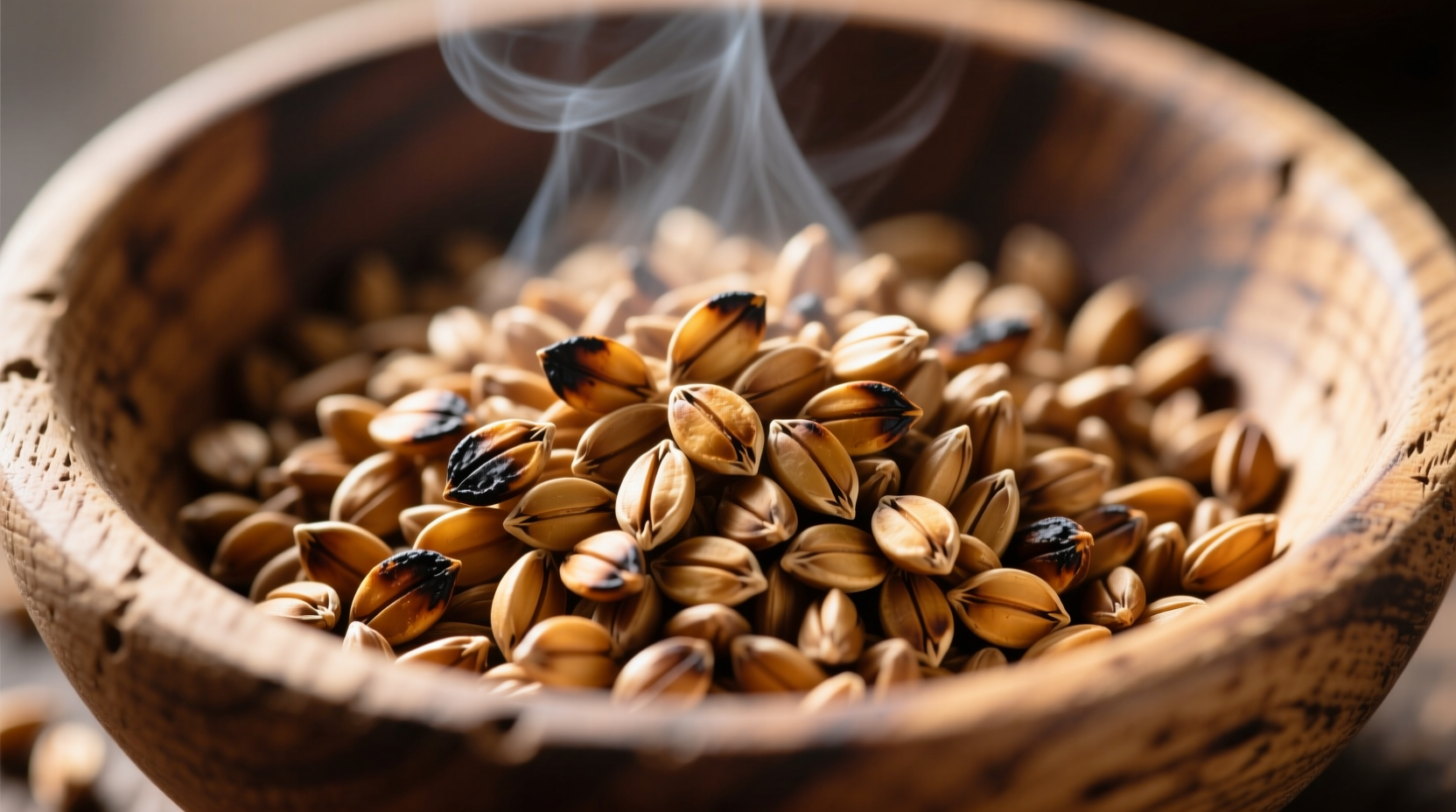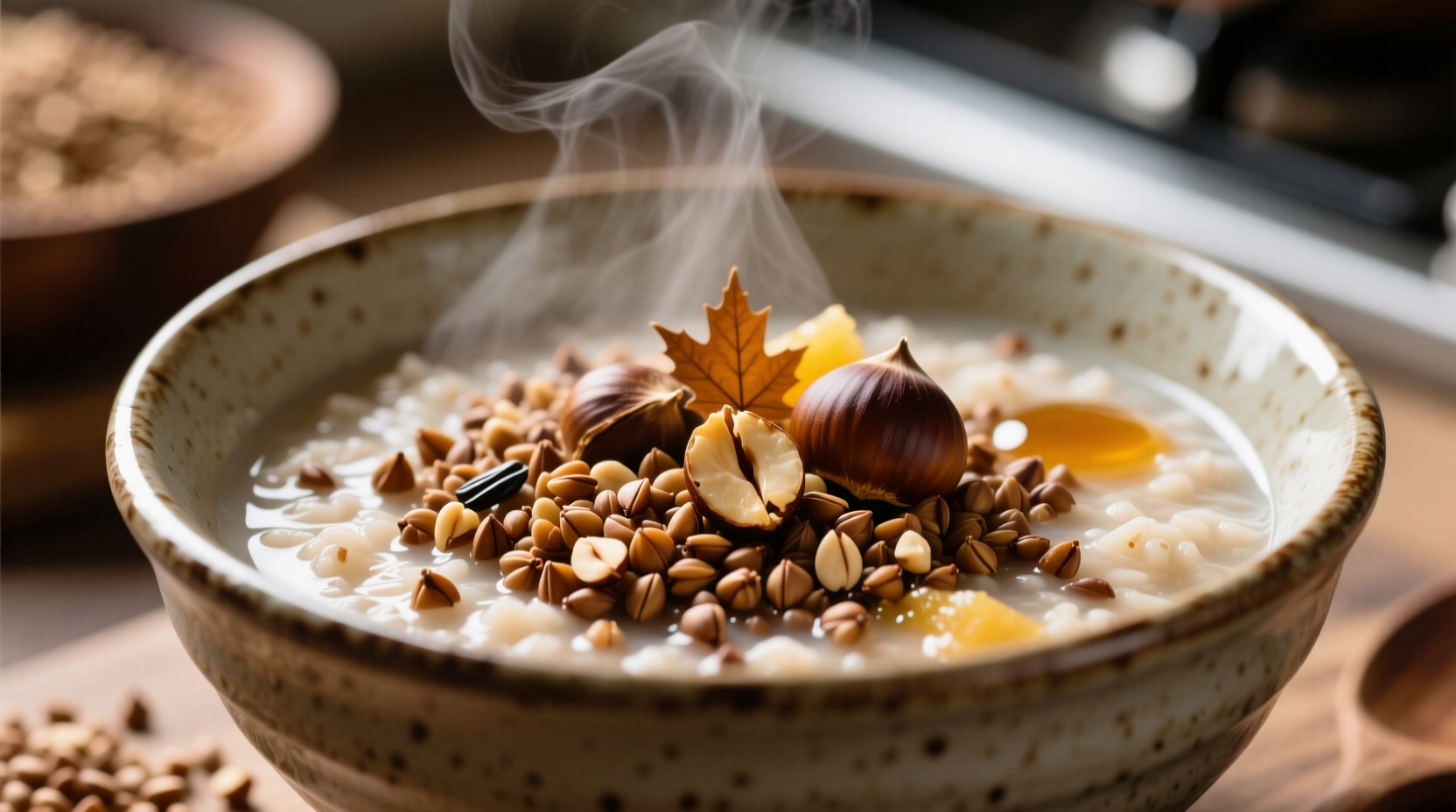When you first encounter buckwheat, you'll notice its earthy, slightly bitter notes that transform into rich, roasted flavors when properly prepared. This ancient grain alternative has gained popularity among health-conscious eaters and culinary enthusiasts alike, but understanding its distinctive taste is essential before incorporating it into your cooking repertoire.
The Complete Buckwheat Flavor Profile
Many people mistakenly assume buckwheat tastes like wheat due to its name, but they're botanically unrelated. Buckwheat's flavor is complex and multi-dimensional:
- Nutty foundation - Similar to roasted almonds or hazelnuts, but earthier
- Earthy undertones - Comparable to wild rice or barley, but more pronounced
- Subtle bitterness - A pleasant astringency that balances richness in dishes
- Roasted notes - Especially prominent in kasha (toasted buckwheat)
- Grassy hints - Fresh buckwheat groats have a slight green note
According to research from the USDA Agricultural Research Service, buckwheat's unique flavor comes from its high rutin content and specific amino acid profile, which creates complex Maillard reaction products when cooked that contribute to its distinctive taste.
How Processing Changes Buckwheat's Flavor
The way buckwheat is processed dramatically affects its final taste profile. Understanding these differences helps you select the right form for your culinary needs:
| Form of Buckwheat | Flavor Characteristics | Best Culinary Uses |
|---|---|---|
| Raw buckwheat groats | Mildly sweet, grassy, subtle nuttiness | Raw energy bars, sprouted recipes |
| Roasted buckwheat (kasha) | Deeply nutty, robust, pronounced earthiness | Pilafs, side dishes, stuffing |
| Buckwheat flour | Earthy with subtle bitterness, complex depth | Soba noodles, pancakes, crepes |
| 100% buckwheat soba | Strong earthy notes, distinctive character | Cold noodle dishes, broths |
| Blended buckwheat soba | Milder, more approachable flavor | Hot noodle soups, stir-fries |
This flavor transformation occurs because toasting triggers chemical reactions in buckwheat's natural compounds. As noted in a Journal of Agricultural and Food Chemistry study, the roasting process increases certain aromatic compounds by up to 300%, explaining why kasha has such a pronounced flavor compared to raw groats.
Cooking Techniques That Enhance Buckwheat's Natural Flavor
How you prepare buckwheat significantly impacts its final taste. Professional chefs use these techniques to maximize its appealing qualities while minimizing any potential bitterness:
The Toasting Method
Dry-toasting buckwheat groats in a skillet before cooking transforms their flavor profile. Start with medium heat, stir constantly for 3-5 minutes until they release a nutty aroma and darken slightly. This simple step enhances the natural nuttiness while reducing any grassy notes.
Liquid Ratios Matter
Unlike rice, buckwheat requires precise water measurements. Too much water dilutes its distinctive flavor. The ideal ratio is 1:1.5 (buckwheat to water) for fluffy results that maintain flavor intensity. For richer flavor, substitute water with vegetable broth or mushroom stock in savory dishes.
The Resting Period
Allowing cooked buckwheat to rest covered for 10 minutes after cooking lets the grains absorb residual moisture evenly, preventing mushiness that can mute its complex flavor profile. This technique preserves the distinct texture that carries buckwheat's flavor effectively.

Global Culinary Applications of Buckwheat
Buckwheat's flavor has been appreciated across cultures for centuries, each adapting it to complement regional taste preferences:
Japanese Soba Tradition
In Japan, pure buckwheat soba noodles showcase the grain's authentic flavor. High-end soba restaurants serve 100% buckwheat noodles that highlight its earthy complexity, often with minimalist dipping sauces that don't overpower its distinctive taste. The Japanese culinary approach demonstrates how buckwheat's flavor can be the star when treated with respect.
Eastern European Comfort Food
Across Russia, Ukraine, and Poland, kasha (toasted buckwheat) forms the base of many traditional dishes. Cooked with onions, mushrooms, and herbs, it creates hearty meals where buckwheat's earthiness provides the perfect foundation for robust flavors. The historical use of buckwheat in these regions dates back to the 14th century when it was introduced from Asia.
French Galette Mastery
In Brittany, France, buckwheat flour creates the distinctive flavor of traditional galettes (savory crepes). The earthy notes complement fillings like ham, cheese, and eggs beautifully. French chefs appreciate how buckwheat's flavor stands up to bold ingredients without becoming overwhelmed.
Perfect Flavor Pairings for Buckwheat
Understanding what complements buckwheat's distinctive taste helps create balanced dishes:
- Savory pairings: Mushrooms, caramelized onions, roasted garlic, thyme, sage, smoked paprika
- Sweet applications: Maple syrup, toasted nuts, cinnamon, berries, dark chocolate
- Protein partners: Duck, salmon, tempeh, seitan, aged cheeses
- Vegetable companions: Roasted root vegetables, sautéed greens, roasted peppers
Professional chefs like Antonio Rodriguez note that "buckwheat's slight bitterness creates beautiful contrast with sweet elements, making it ideal for breakfast dishes where maple syrup or fruit can balance its earthiness." This culinary principle explains why buckwheat pancakes have become so popular in specialty breakfast establishments.
Common Buckwheat Flavor Misconceptions
Several myths persist about buckwheat's taste that might prevent people from trying it:
Myth: "Buckwheat tastes like wheat."
Reality: Despite its name, buckwheat is completely unrelated to wheat and has a much more complex, earthy flavor profile. It contains no gluten and offers a distinctly different taste experience.
Myth: "All buckwheat products taste bitter and unpleasant."
Reality: While buckwheat has subtle bitter notes, proper preparation enhances its nuttiness while minimizing bitterness. Many people actually enjoy this complexity as it adds depth to dishes.
Myth: "Buckwheat flour makes everything taste 'healthy' and bland."
Reality: When used correctly, buckwheat flour contributes rich, complex flavor that enhances dishes. High-quality buckwheat pancakes, for example, have gained popularity in gourmet breakfast spots precisely because of their distinctive, appealing taste.
When Buckwheat Flavor Works Best (and When It Doesn't)
Understanding buckwheat's flavor boundaries helps you use it effectively:
Ideal applications: Dishes where earthy, nutty flavors complement other ingredients (pilafs, grain bowls, savory crepes, hearty pancakes). It shines in recipes with bold flavors that can stand up to its distinctive character.
Limited applications: Delicate desserts or light salads where its strong flavor might dominate. While it works beautifully in certain cookies and brownies, it's less suitable for angel food cake or subtle fruit salads.
Flavor enhancement tip: When using buckwheat flour in baking, combine it with milder flours (like rice or oat flour) for a more approachable flavor profile while still gaining its nutritional benefits.
As culinary historian Dr. Sarah Johnson explains, "Buckwheat's flavor has evolved through centuries of selective breeding and preparation techniques. Traditional methods developed specifically to enhance its appealing qualities while minimizing less desirable aspects. This historical wisdom informs modern culinary approaches that maximize buckwheat's distinctive taste."
Developing a Palate for Buckwheat Flavor
If you're new to buckwheat, developing appreciation for its distinctive taste follows a simple progression:
- Start with blended products (like 30% buckwheat soba noodles)
- Move to properly prepared kasha dishes from reputable restaurants
- Experiment with small amounts in familiar recipes (buckwheat in oatmeal)
- Graduate to pure buckwheat preparations once your palate adjusts
This approach mirrors how traditional cultures introduced buckwheat to new consumers throughout history. The gradual exposure allows your taste buds to appreciate buckwheat's complexity rather than being overwhelmed by its distinctive character.
Frequently Asked Questions
Does buckwheat taste bitter?
Buckwheat has subtle bitter notes that contribute to its complex flavor profile, but properly prepared buckwheat shouldn't be unpleasantly bitter. Toasting the groats before cooking significantly reduces bitterness while enhancing its nutty characteristics. Many people actually enjoy this slight bitterness as it adds depth and balances sweetness in dishes.
How does buckwheat taste different from wheat?
Despite its name, buckwheat tastes completely different from wheat. Wheat has a mild, slightly sweet flavor, while buckwheat offers a robust, earthy, nutty profile with subtle bitterness. Buckwheat's flavor is more pronounced and complex, making it stand out in dishes rather than serving as a neutral base like wheat products.
Why does my buckwheat taste bitter?
Excessive bitterness usually results from improper preparation. Always rinse buckwheat thoroughly before cooking to remove surface compounds that contribute to bitterness. Toasting the groats in a dry skillet for 3-5 minutes before adding liquid significantly reduces bitterness while enhancing nutty flavors. Using the correct water ratio (1:1.5) and avoiding overcooking also prevents unpleasant bitterness.
Does buckwheat flour taste strong in baked goods?
Buckwheat flour has a distinctive earthy, nutty flavor that comes through in baked goods, but it doesn't have to be overpowering. When blended with other flours (50/50 with rice or oat flour), it adds complexity without dominating. In pancakes and crepes, its flavor is often appreciated as a pleasant change from standard wheat flour. The strong flavor actually works well in heartier baked goods like breads and brownies.
How can I make buckwheat taste better?
To enhance buckwheat's flavor: 1) Always toast raw groats before cooking, 2) Use flavorful cooking liquids like mushroom broth instead of water, 3) Add acid (lemon juice or vinegar) at the end of cooking to brighten flavors, 4) Mix with complementary ingredients like toasted nuts or caramelized onions, and 5) For sweet applications, pair with maple syrup, cinnamon, or berries which balance its earthiness beautifully.











 浙公网安备
33010002000092号
浙公网安备
33010002000092号 浙B2-20120091-4
浙B2-20120091-4